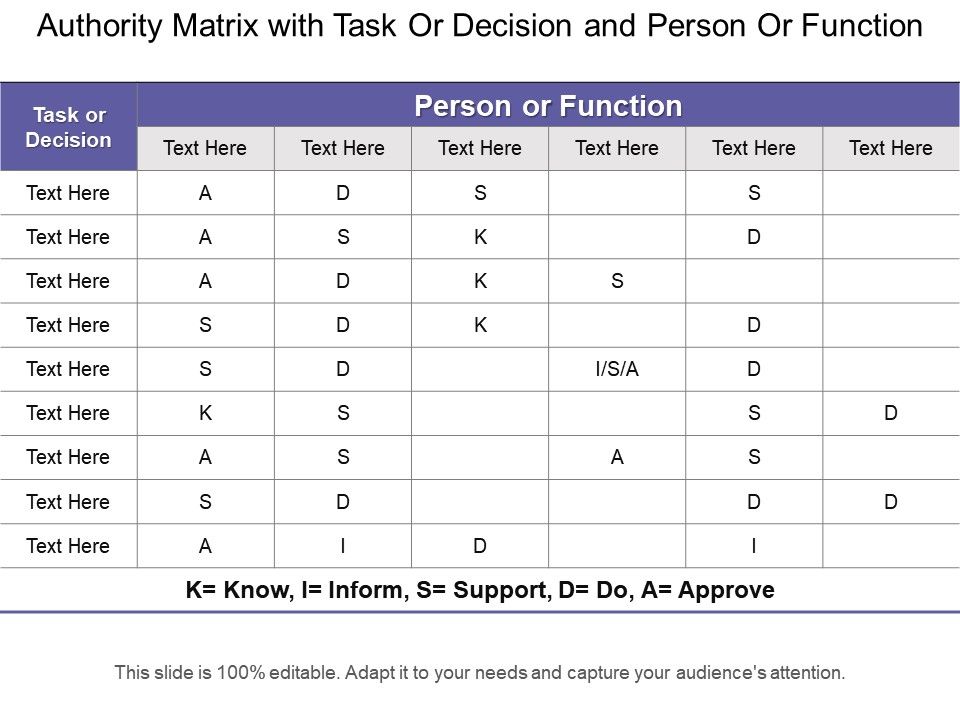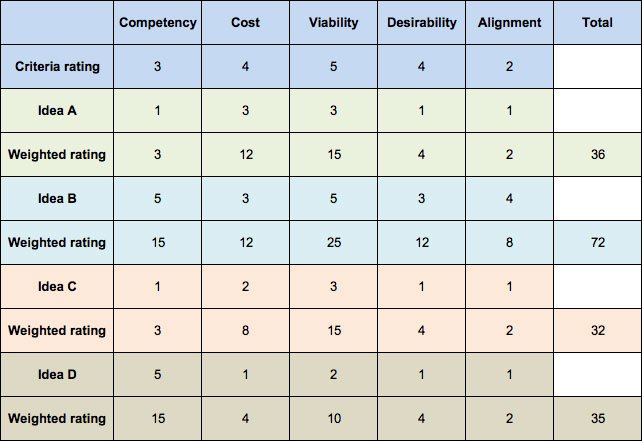

Grouped decision matrices allow you to group matrix rows by keys such as geographic region or product code.ĭecision matrices are flexible in how you can deploy them.
 Standard decision matrices have common characteristics, including input columns, output columns, and versions. An eligibility matrix evaluates a candidate’s eligibility based on their characteristics.ĭecision matrices are one of two broad types. A pricing matrix matches a set of product characteristics to a price. A demographic matrix outputs demographic data based on a location. A weather alert matrix sets an alert flag when weather conditions rise or fall below a designated temperature. An insurance premium matrix matches the characteristics of the insured person to policy premiums. Here are just a few use cases for decision matrices. If the SLA is Platinum, the retention cost is $12,500, and the retention rate is 95%.īusiness users can easily add a matrix to an expression set, or another process as a single element in a more complex calculation.ĭecision matrices are helpful whenever a business process needs to determine a particular value based on one or more inputs. If the SLA is Gold, the retention cost is $11,000, and the retention rate is 90%. This matrix outputs the retention cost and rate of retention based on service level agreement (SLA) input. Here’s an example of a simple decision matrix with one input column–SLA–and two output columns, Retention Cost and Retention Rate. When an expression set or other tool calls a decision matrix, the engine locates the table row that matches the input values and returns the output value for that row. The system takes in inputs and then “looks up” the appropriate outputs. Decision Matrices at a Glanceĭecision matrices are powerful lookup tables that contain user-defined input and output columns. In this unit, let’s learn more about the main features of decision matrices and decision tables. Recall that Business Rules Engine includes three core tools: expression sets, decision matrices, and decision tables.ĭecision tables and decision matrices are both types of lookup tables.īoth tools map input values to output values, but their functionality and use cases differ.
Standard decision matrices have common characteristics, including input columns, output columns, and versions. An eligibility matrix evaluates a candidate’s eligibility based on their characteristics.ĭecision matrices are one of two broad types. A pricing matrix matches a set of product characteristics to a price. A demographic matrix outputs demographic data based on a location. A weather alert matrix sets an alert flag when weather conditions rise or fall below a designated temperature. An insurance premium matrix matches the characteristics of the insured person to policy premiums. Here are just a few use cases for decision matrices. If the SLA is Platinum, the retention cost is $12,500, and the retention rate is 95%.īusiness users can easily add a matrix to an expression set, or another process as a single element in a more complex calculation.ĭecision matrices are helpful whenever a business process needs to determine a particular value based on one or more inputs. If the SLA is Gold, the retention cost is $11,000, and the retention rate is 90%. This matrix outputs the retention cost and rate of retention based on service level agreement (SLA) input. Here’s an example of a simple decision matrix with one input column–SLA–and two output columns, Retention Cost and Retention Rate. When an expression set or other tool calls a decision matrix, the engine locates the table row that matches the input values and returns the output value for that row. The system takes in inputs and then “looks up” the appropriate outputs. Decision Matrices at a Glanceĭecision matrices are powerful lookup tables that contain user-defined input and output columns. In this unit, let’s learn more about the main features of decision matrices and decision tables. Recall that Business Rules Engine includes three core tools: expression sets, decision matrices, and decision tables.ĭecision tables and decision matrices are both types of lookup tables.īoth tools map input values to output values, but their functionality and use cases differ. #Decision matrix how to
Explain how to read decision matrices and decision tables.Identify when to use decision matrices or decision tables.Summarize the main functions of decision matrices and decision tables.After completing this unit, you’ll be able to:






 0 kommentar(er)
0 kommentar(er)
